Welcome to the fourth installment of Patriotic Nerdery, my bizarre but not-entirely-pointless blog about New Zealanders in the Marvel Universe. This chapter deals with the formidable Devlin Greystone, who can boast more appearances (ten!) than any other Kiwi in the MU. He also appears on three covers, while none of his comic compatriots can even boast one. This may have something to do with the fact that he comes from a stock dystopian future - Earth-1191, if you’re counting. (The official Marvel U is Earth-616, this will become important later, so note that non-nerds!). He’s got that whole alternate future thing going on.
(Behold, the Cliff Curtis of Earth-1191!)
If you feel a bit of déjà vu here, hearken back to the second character we examined in this series, Kiwi Black. Like that Ruatorian teleporter, Greystone represents a bit of cultural hijacking. (He actually predates KB by six years - he was created in 1997, KB in 2003. This makes him the first Maori character to appear in a Marvel comic). An American creative team filtered ‘Once Were Warriors’ through ‘Mad Max’, and didn’t care much for the ethnographic details. The situation is worsened when we take into account that it was the Nineties. This was an age of grotesque excess in superhero comics - yes, even worse than usual. That creative ugliness, and a bloated comic book industry, nearly destroyed the whole damn genre during the decade. So a bit of bizarre cultural theft actually seems mild in comparison.
Greystone’s run was right at the height of this, in a ghastly comic called X-Factor. This title is one of the many, many spinoffs of the X-Men franchise. It’s also a prime example of the aforementioned atrocities. (Seriously, it was not a good decade to be a mutant. Anyone who remembers Rogue’s big hair from that period only does so with a shuddah!)
Greystone’s mutant ability basically classifies him as a Hulk- or Giant-Man-type; he can grow in size at will, becoming exponentially stronger (and uglier) with every inch. There’s theoretically no limit to this, but once he gets REALLY big he loses control and you don’t want that.
He also - very handily - has the ability to assume the shape of a 12-year-old white boy, called Brian Young. Greystone can change from muscular black dude to skinny white kid in a matter of moments (unlike Michael Jackson who took twenty years. HI-O!) This ability is very useful when you’re a giant Maori cyberwarrior trying to pass in the present day.
I can’t work out if those dreadlocks are supposed to be some kind of smoke discharger, or maybe an anemone. The ‘tribal’ tattoos - if you can call them that - seem to change constantly, and have little or nothing Maori about them. But like I said, this was the Nineties, and we’re talking about a second-rate X-ripoff here. Greystone’s creator was one Howard Mackie, chiefly remembered for his run on Ghost Rider at this same time. (You may remember Ghost Rider from the mindboggingly bad Nicolas Cage movie, made before Marvel got their films sorted. Or if you’re lucky, you don’t). With respect to an unnamed friend of mine, who was a great fan of 90’s Ghost Rider: they were some crappy comics dude, in hindsight at least. Many of the worst tropes - that general air of style over substance - pervade Mr Mackie’s work.
Oh, that reminds me - the plot! The world Greystone hails from is essentially our one around the 2070’s sometime - only in this timeline, the Sentinels (mean Humongous Mecha originally designed to control mutants) got sentient and decided they could run things better than humans. Things never go well when robots take over - witness R.U.R. - and this dark timeline was no exception. Normal humans were driven into hive cities "for their protection", while mutants were herded into extermination camps. They were also branded with an "M" over one of their eyes, and this becomes a hallmark of characters from this alterna-world. Basically, it wasn’t cinematic.
The first anyone in "our" (i.e. Earth-616) timeline knew of all this was when a guy called Bishop (think Sam L. Jackson with a bigarse cyberarm) managed to travel from his craphole world to out slightly-less-crappy one. (Bishop, with his rippling muscles, bionic doo-dads, and general OTTness is a great example of those aforementioned Nineties excess, by the way). In his own timeline he had established a mutant underground, inspired by the memory of Professor Xavier (long since executed in his world). He sought to return to the past to undo what had happened.
And here we come to the time-traveling. Let’s try and keep this simple. I find there are two common ways of handling this in fiction (although the tropers identify six - but my blog, my rules). You have the Back To The Future concept, which envisions time as a single linear concept. It’s a road you can jump back and forward along, tweaking here-and-there to change the "future". It is much obsessed with paradoxes, the Grandfather one in particular. But there is only ever "one" timeline; you just alter it as you go along, and can actively influence it for better or worse.
(Please allow a rant here. This concept of time travel was also in the TV series Heroes. Oh, Heroes - it was like a toxic relationship for me. It started out so good, and for a while it was all picnics and loving. Then it got worse, and worse, and by god even worse. One of its many problems was that it had THREE time-travelers wasting an awful lot of screenspace, contradicting their own rules, and basically insulting the audience. Emo drip Peter spent two whole episodes romancing an immensely boring Irish waitress, only to abandon her in an alternate future - which he then changed and erased. She was never mentioned again. WHAT. THE. HELL?)
As you could probably sense, I don’t like that theory. I much prefer the one that Marvel uses. This holds that you never actually "travel through time" - you just bounce about through a variety of alternate universes. You can never change the "future", because it is just one of an infinite number of possible worlds. Anything you do only influences the one you’re in, not the "past" or "future" you came from. So there are no paradoxes, or infinite loops, or any chance of you doing a Phillip J Fry and becoming your own grandparent. This theory holds two terrible truths, as all Marvel time-travelers eventually discover - one, that you can’t change the future (and hence your personal timeline), and two - you can’t go home again. Sucks, huh? But I like it. The same idea worked brilliantly on Lost over the past two seasons. Lost is waaay better than Heroes.
Now this is relevant to Greystone and his fellow team members, the mutant underground (Xavier’s Security Enforcers, or XSE). When we meet them in the 2070’s, they are trying to rebuild Bishop’s time machine - basically a rather bland-looking spaceship - which was conveniently destroyed when he last used it. They plan to follow Bishop back to Xavier’s time and literally fight the future. There is where we first meet our lad.
What’s not to like? I would have preferred "whare toa" instead of "war hut". That omission suggests there’s something to Fixx’s joke about how he’s a New Jersey kid - "retro boy"! But if you can believe an alternate future, you can believe that a Maori dude could have wound up in the ruins of New York (and indeed we’ll get to that shortly). At any rate, the Marvel Atlas gives his birthplace as Auckland - for the want of something better, I’d imagine - and I consider that canon.
So off they go, blithely unaware their mission is ultimately futile. Meanwhile, our lad gets his first cover.
And also a DeMille closeup, showing how Marvel artists seem to have confused Maori with Moai.
(How does this guy manage to chew?)
Running around "in the past", Greystone and co start to get heavily involved with modern-day doings. In his form as the boy Brian Young, he befriends a girl who is regularly beaten by her parents. He manages to pull off some fine superheroics, and teach them quite a lesson. It shows he’s not all talk when it comes to the noble warrior thing.
That earns him a second cover.
Then we come to his origin story. No other Kiwi character in the MU ever got one of these, so it’s significant in its own way. We learn that the young Greystone lived with his mother in a shattered New York, at least since he was a lad. I’m still going with the born-in-Auckland theory, because it’s quite believable when you consider the rest of the story. (How’d they get there? I dunno. A wizard did it). We learn how he lost his mother, first manifested his mutant ability, and gained a bitter sworn enemy - Micah Leash.
Heady stuff. This is all brought home to Greystone as he adventures in this world, and investigates a kidnapping - of a child with a familiar name. (Also note how the artists have completely given up on the facial tattoos by now, having probably forgotten all about them in the first place).
Of course, what Greystone doesn’t realize is that this Micah isn’t "his" one. Nothing he can do will change what happened to him, or what he went through. Your personal timeline is inviolate. But he starts to get a bit obsessed, and leads the team to find Micah.
They track the kidnapped boy down to a weirdo cult who look like extras from Barbarian Queen. Greystone prepares for his brutal revenge, when one of the cultists tries to kill the kid himself.
A furious Greystone promptly wastes the cultist, thus preventing him from scarring Micah - and, in the (still deluded) view of him and his team, changing the future. Our tortured hero is confronted with his issues pretty bluntly. After all, if killing a child is required to make you feel better, you damn well need counseling.
At this point, our lad and the rest of the team kind of part ways. They’re too busy hanging out with the X-Men. You see, those guys are their heroes, and if superhero teams were high school cliques then the X-Men are the ones with the weed behind the bikesheds - dangerous yet compelling. While mixing with them, our time travelers begin to get a clearer idea of their real position. They start to realize they’re stuck in this continuity, and nothing they do changes any future. Worse yet, it appears their time machine thingee is seriously malfunctioning, with an unstable reactor core and all.
Greystone, however, has gotten a bit scary. He’s convinced the mission has been accomplished, and the future is "fixed" - no Micah, his mother alive, and so on. He gets so intense his eyes go pink.
Then, he has his best cover (the bad guys always have the best). It’s his third and final; also those facial tats have finally turned into something from Tron. (Or kinda like Circuit Breaker - ah, now there was a great character).
It’s all on now, sister. All that barely suppressed cheesiness which dogs this kind of comic finally bursts forth, like some kind of overripe parmesan that a diseased cat puked up. It STINKS. Greystone starts chanting "GOIN HOME TO MAMMA" regularly, throws a tantrum at the group, and decides he’s going back home (you know, the one that doesn’t actually exist). He must be suffering from TEMPORAL INSANITY, whatever the hell that is. Also, he is quite blithely unaware that the time machine is kinda defective.
While Havok - he of the boundless fringe and girl’s legs - flies up to Save The Day, he does one of those inner narrative things that usually make a joke of comic book dialogue. "Chances diminishing…only one chance…!" and so on. As for dear old Greystone - well, he’s not hitchhiking anymore, he’s RIDING.
Fortunately - for us readers, anyway - Havok makes it to the ship and somehow breaks Greystone’s fugue. Bit late now, mate.
At this hour of great crisis, our Kiwi hero displays a great deal of humanity and poignancy, but is pretty frigging useless as a superhero. He reverts to Brian mode, allowing that poseur Havok to exposit and generally act like a dick. (He spells his name with a ‘k’, people - how wanky is that?) "We will live - I promise…"
Yeah, about that -
Bummer. It’s a dramatic end to a dramatic career. After all, Devlin Greystone’s track record is pretty impressive. He appears in more comics than our three previous entries combined. He gets three covers, which is really something for a C-grade redshirt-type character, let alone one from New Zealand. We even have an origin story and dramatic death scene - that’s virtually a whole character arc by modern standards. Ultimately, his character - despite all that dubious cultural piracy - is far better developed than others in his place could have hoped for.
Oh, and don’t worry, Havok wasn’t killed. How insulting is that? He was just shunted to an alternate dimension. Heigh-ho! Greystone may be gone, but some fans won’t forget him.
(My next blog will be another break from Patriotic Nerdery, as it will be dedicated to the Silhouette from Watchmen and the new Ms Marvel).

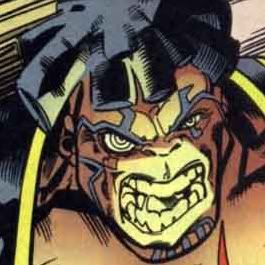
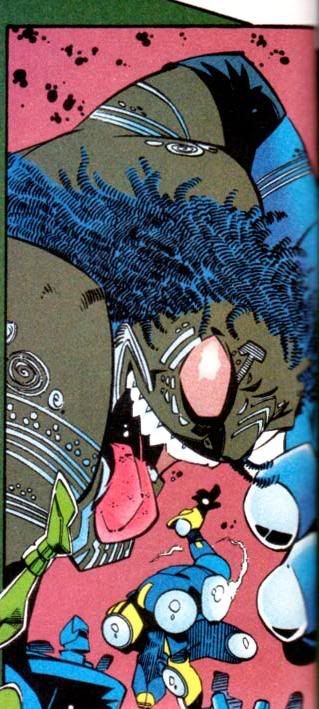
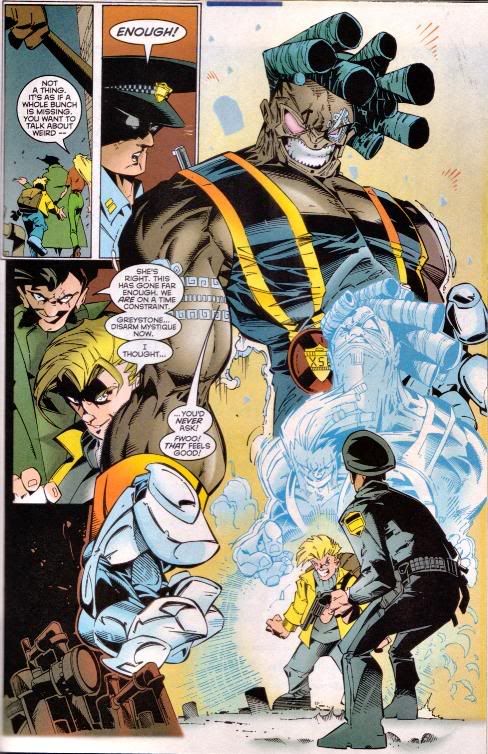
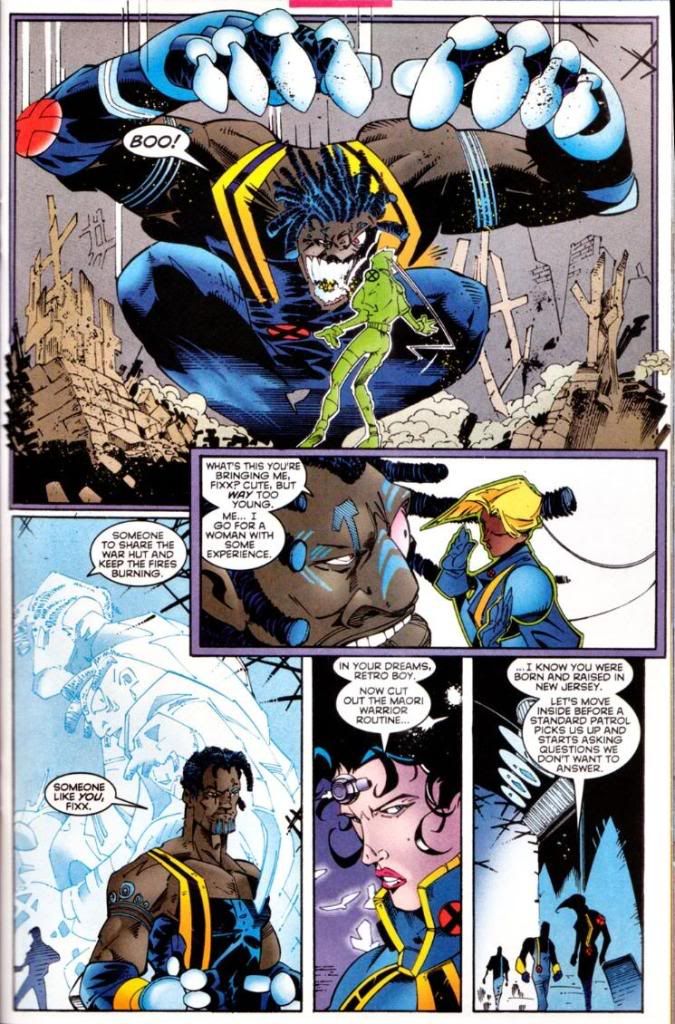
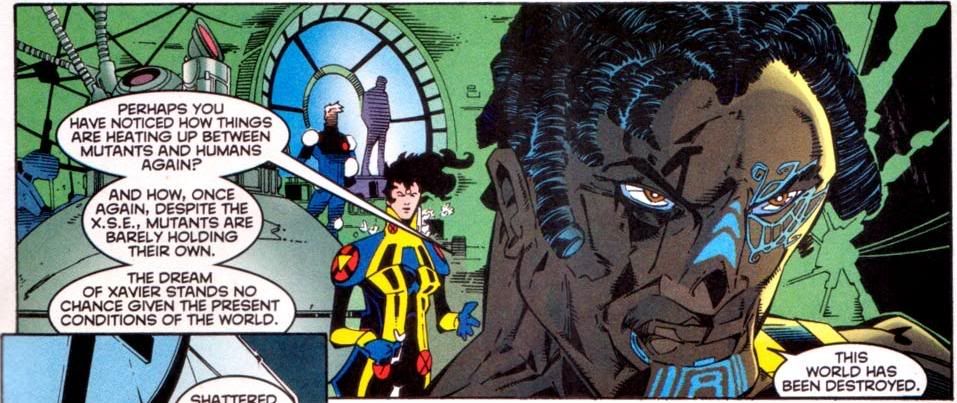

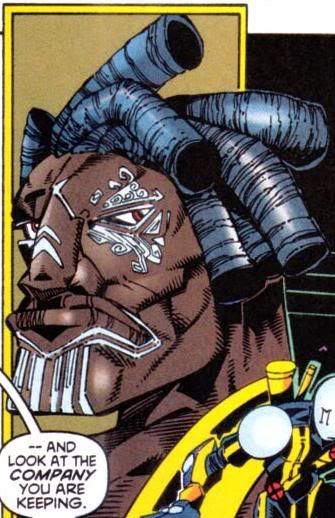
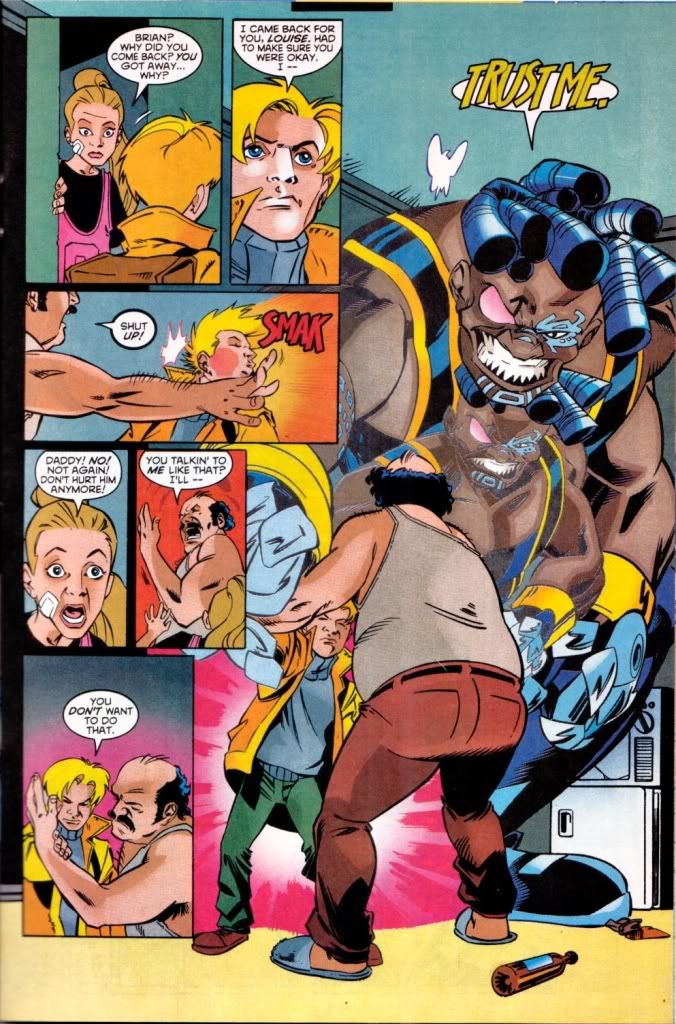
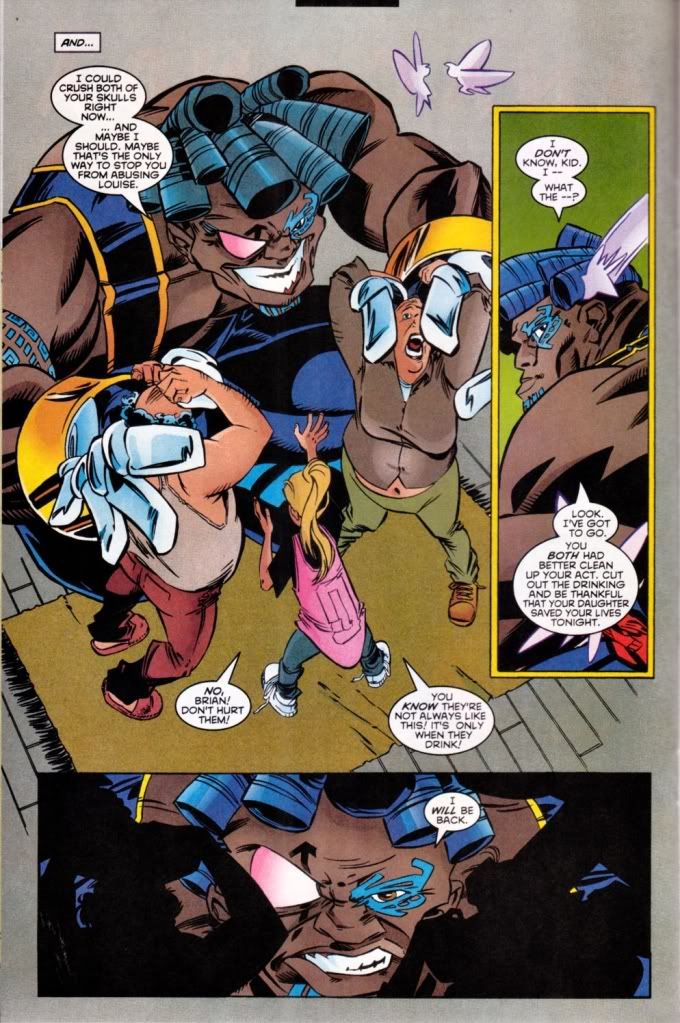
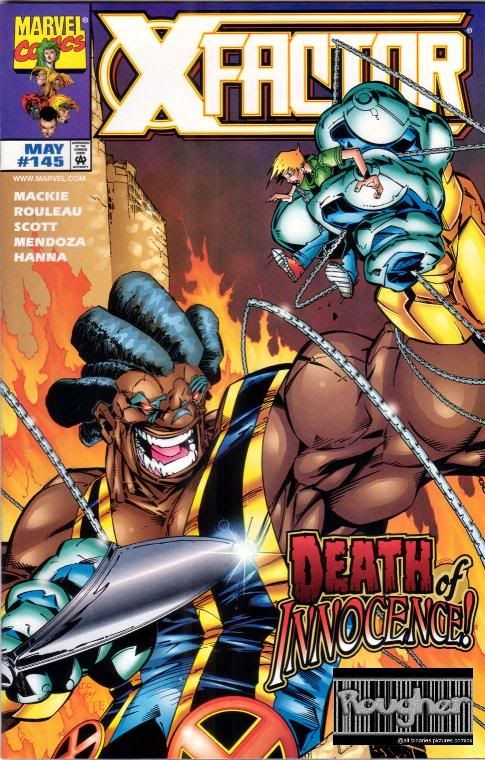
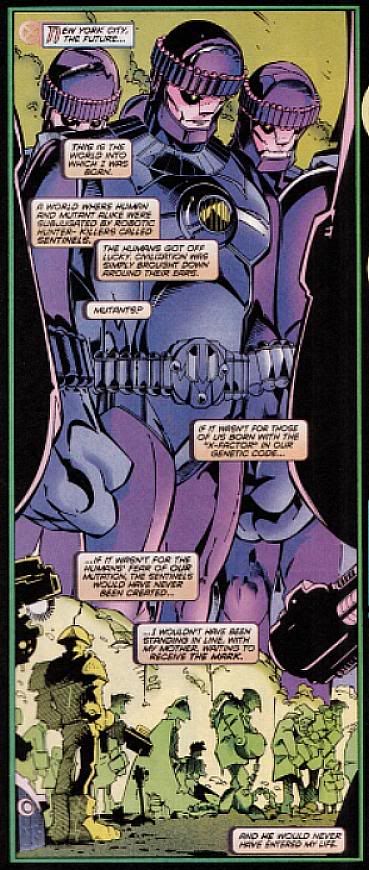
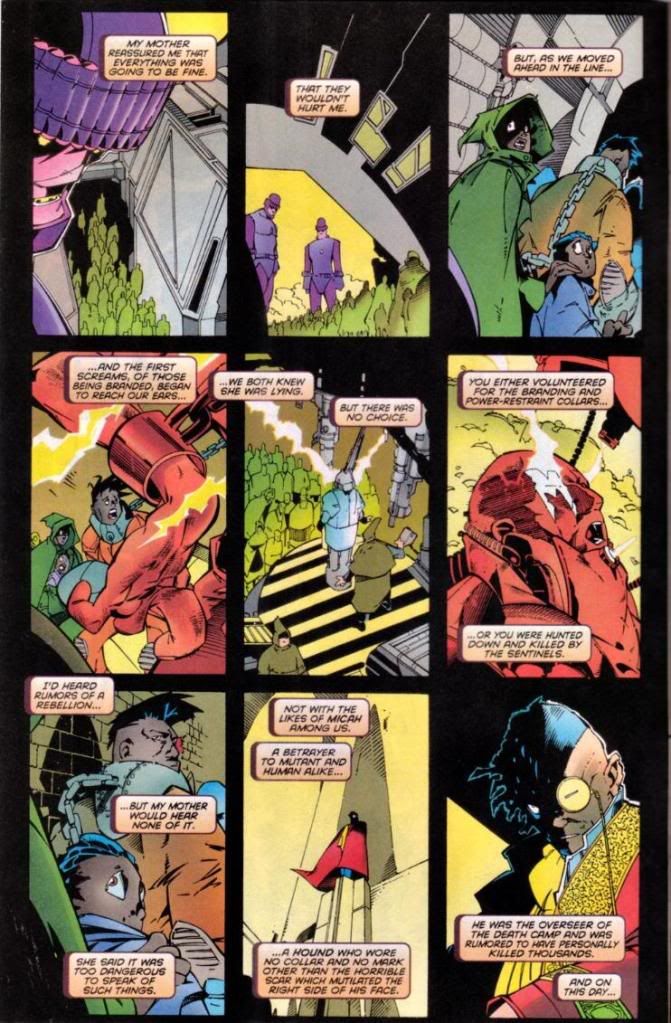
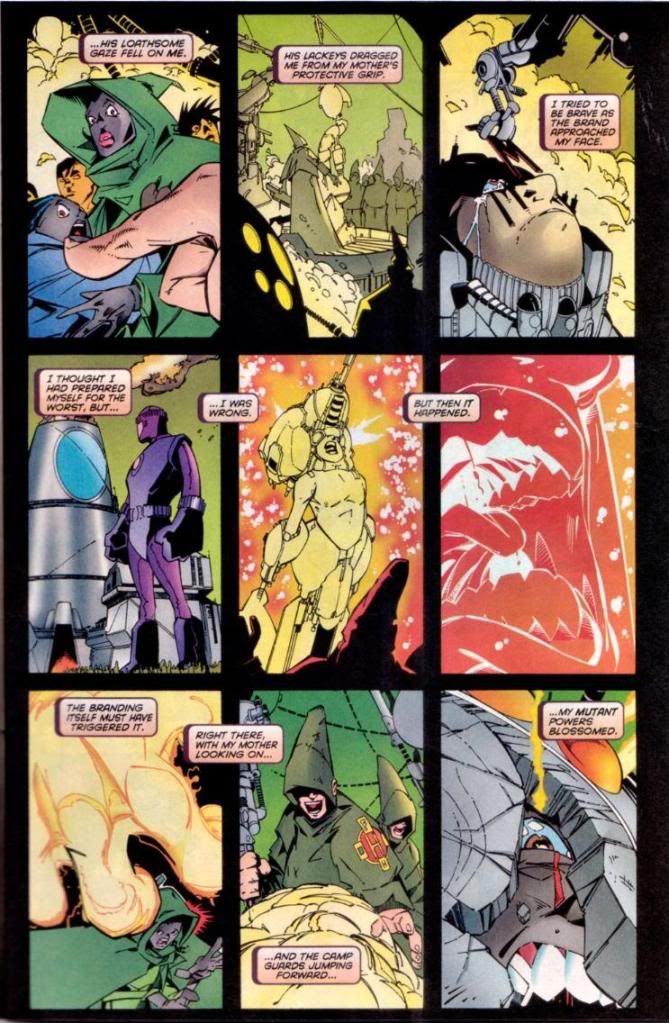

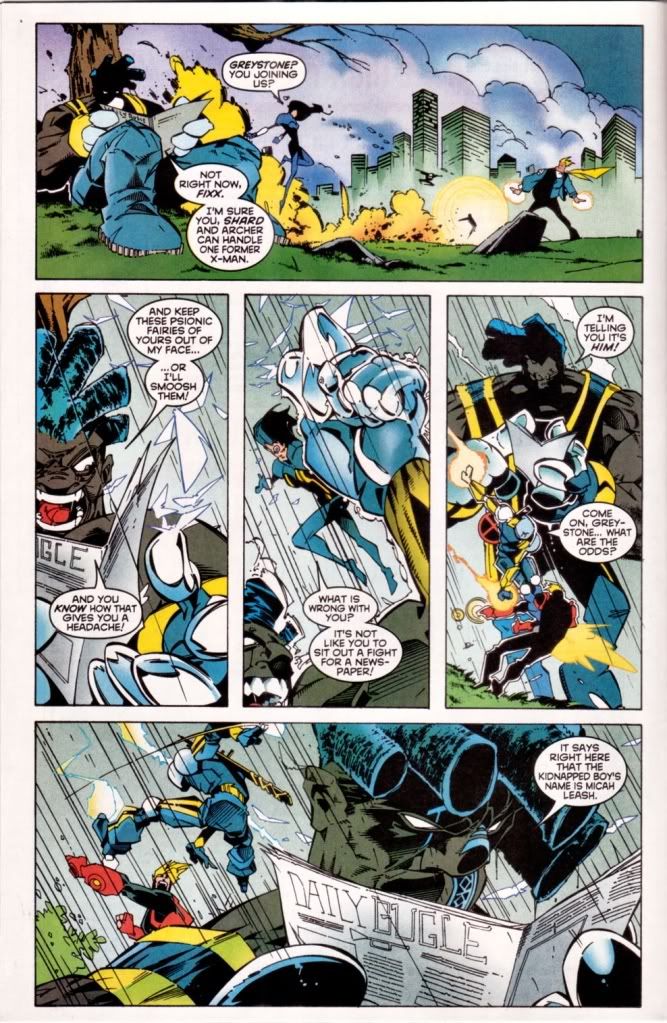
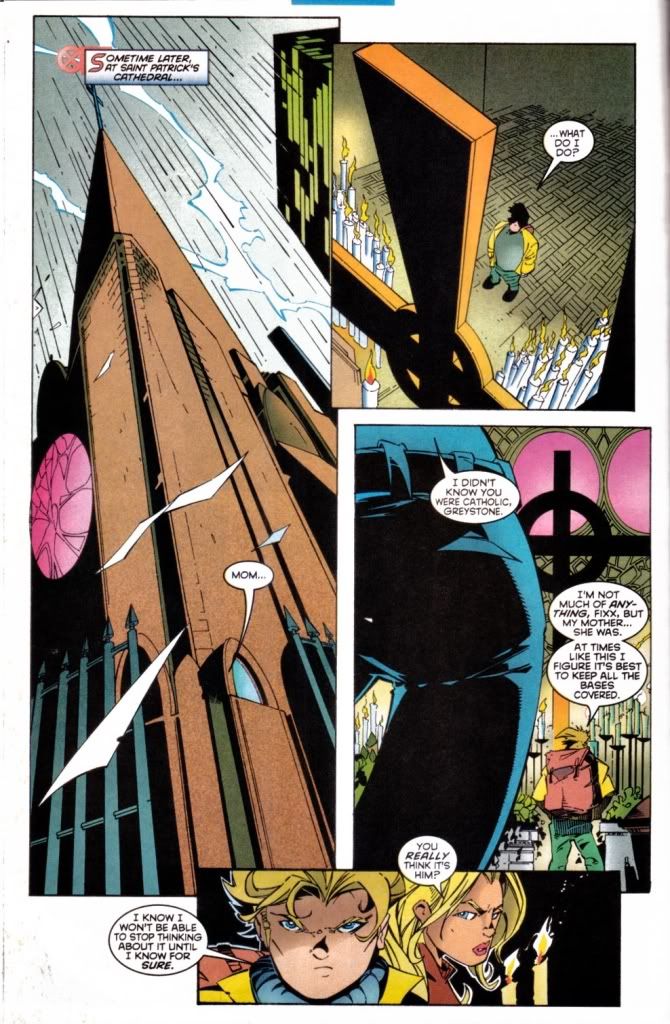
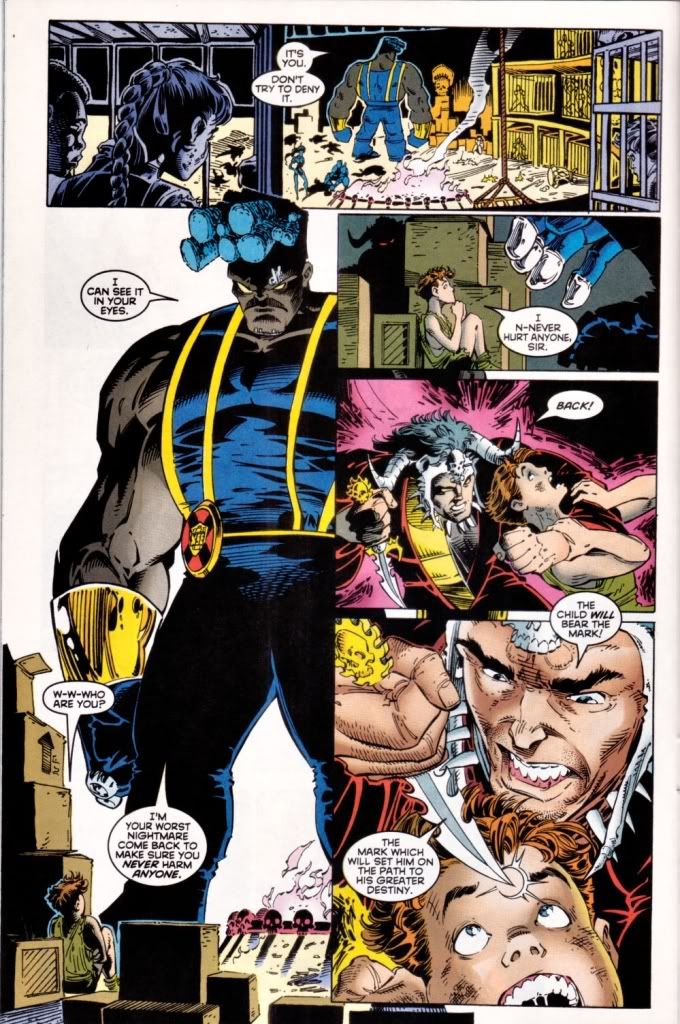
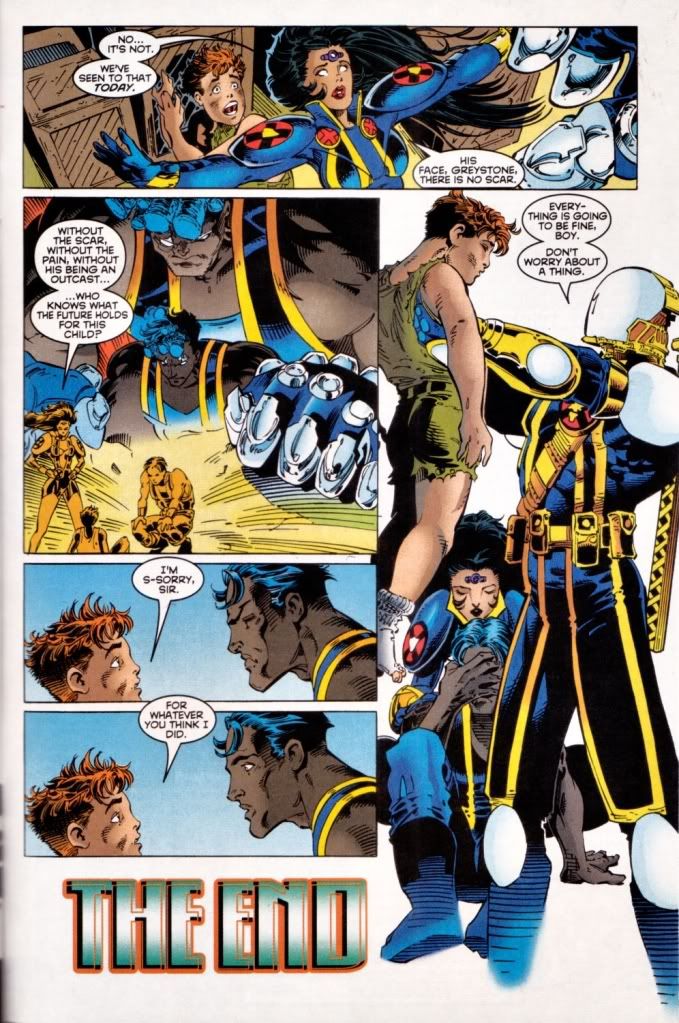
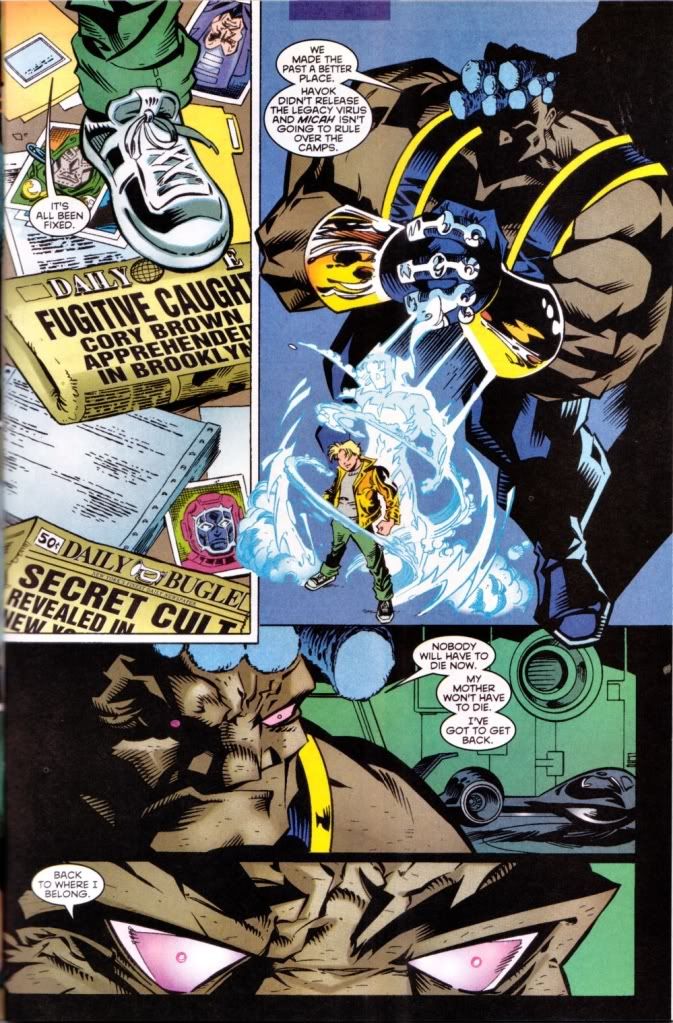
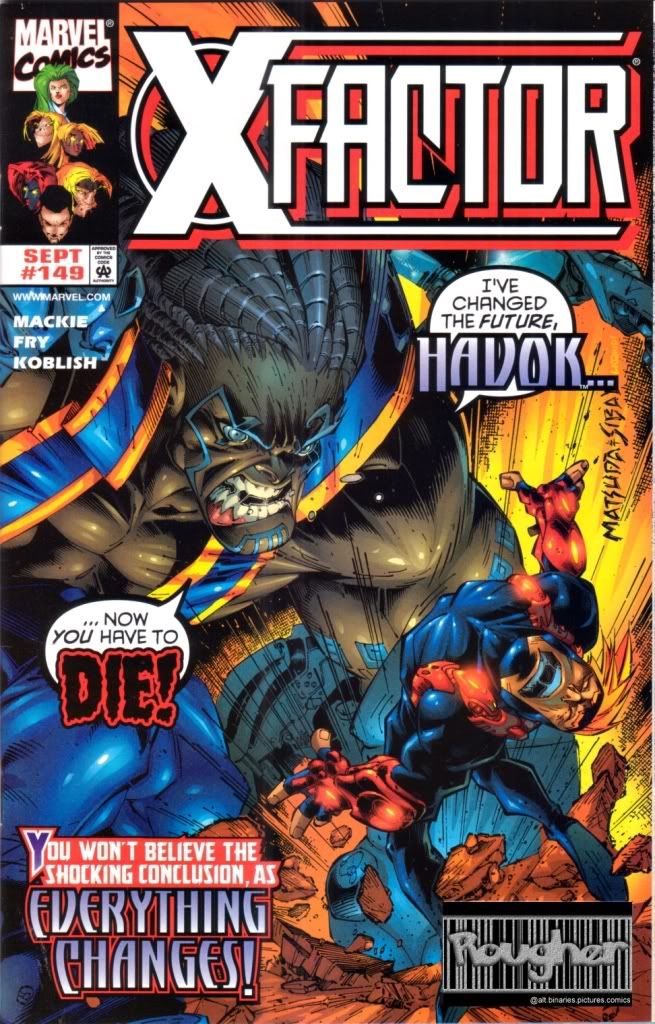

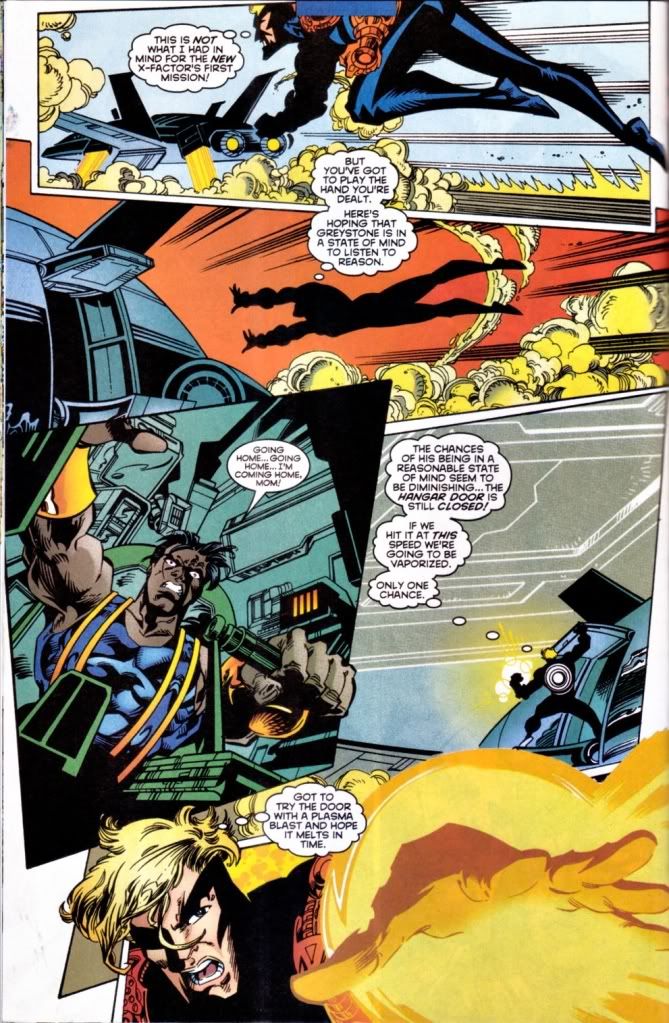
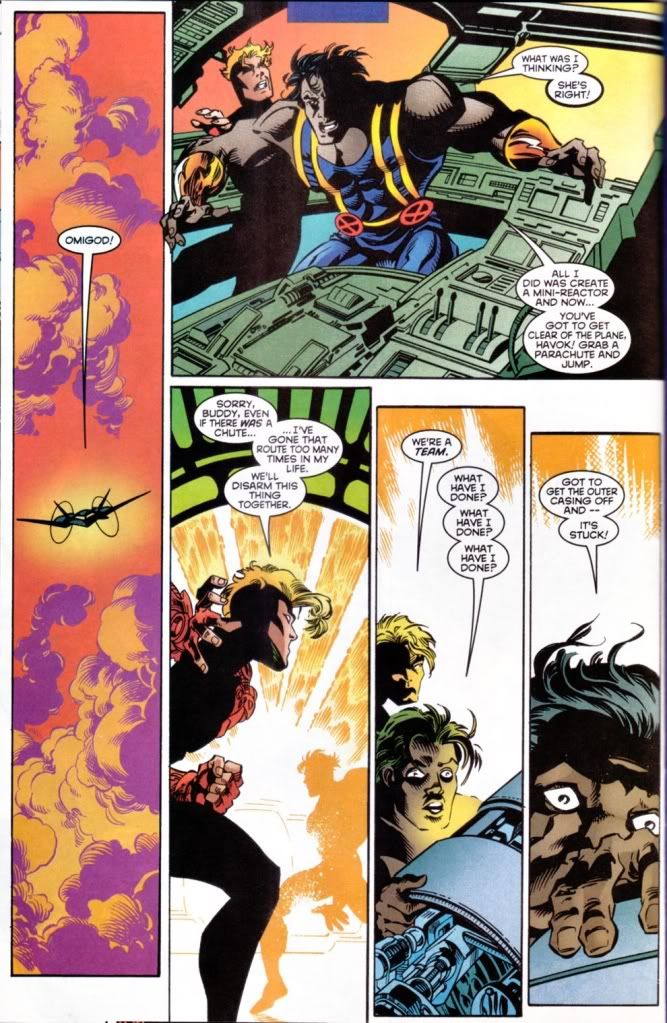
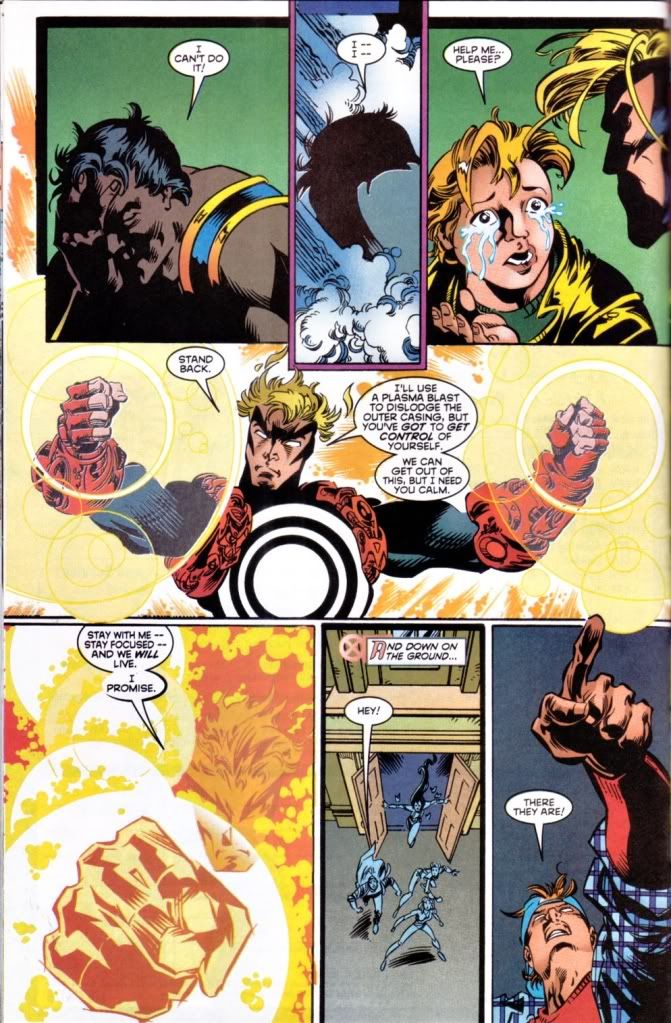
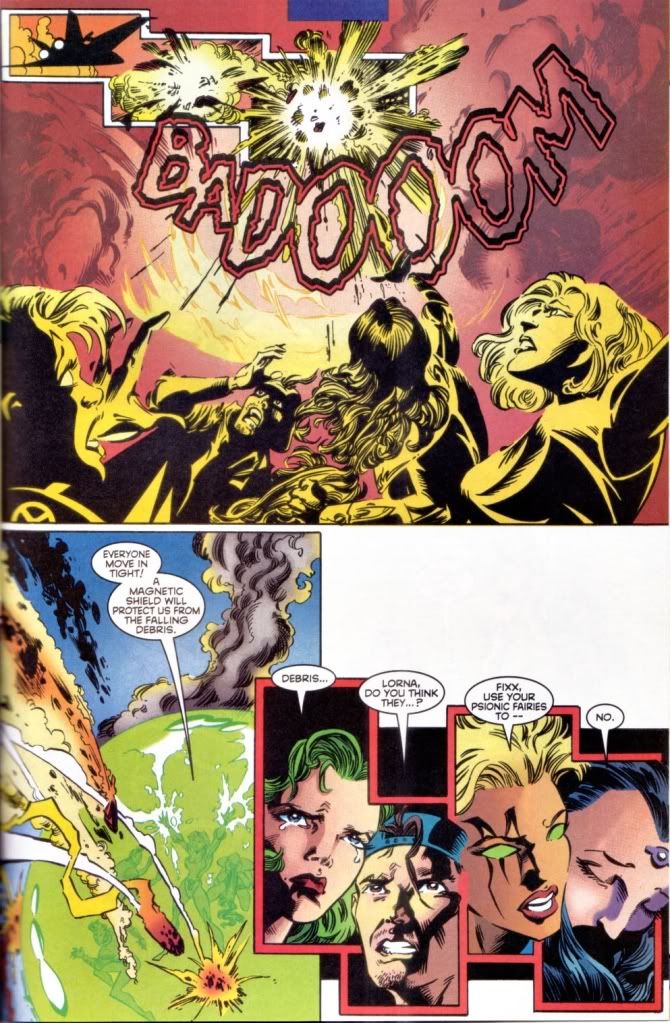
No comments:
Post a Comment